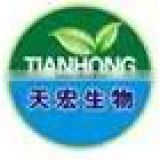Hawthorn Fruit Extract Hawthorn Flavonoids
Negotiable /Kilogram
Min.Order:1 Kilogram
Quick Details View All >
Ningbo Tianhong Biotech Co., Ltd.
Product Details
Several species of hawthorn have been used in traditional medicine, and there is considerable interest in testing hawthorn products for evidence-based medicine. The products being tested are often derived from C. monogyna, C laevigata, or related Crataegus species, "collectively known as hawthorn", not necessarily distinguishing between these species, which are very similar in appearance.A meta-analysis of previous studies concluded that there is evidence of benefit for an extract in treating chronic heart failure. A 2010 reviewcites the need for further study of the best dosages and concludes that although "many different theoretical interactions between Crataegus and orthodox medications have been postulated ... none have [yet] been substantiated.
The dried fruits of Crataegus pinnatifida (called shan zhain Chinese) are used in naturopathic medicine and traditional Chinese medicine, primarily as a digestive aid. A closely related species, Crataegus cuneata (Japanese Hawthorn, called sanzashi in Japanese) is used in a similar manner. Other species (especially Crataegus laevigata) are used in herbal medicine where the plant is believed to strengthen cardiovascular function.[16]
Another use of this herb is as a mild sedative in promotion of sleep.[citation needed] Hawthorn should not be used during pregnancy.[citation needed]
Active ingredients found in hawthorn include tannins, flavonoids (such as vitexin, rutin, quercetin, and hyperoside), oligomeric proanthocyanidins (OPCs, such as epicatechin, procyanidin, and particularly procyanidin B-2), flavone-C, triterpene acids (such ursolic acid, oleanolic acid, and crataegolic acid), and phenolic acids (such as caffeic acid, chlorogenic acid, and related phenolcarboxylic acids). Standardization of hawthorn products is based on content of flavonoids (2.2%) and OPCs (18.75%).[17]
Package:

Contact Supplier

You May Like

New Products
Popular Searches
Recommended Products
Find Similar Products By Category